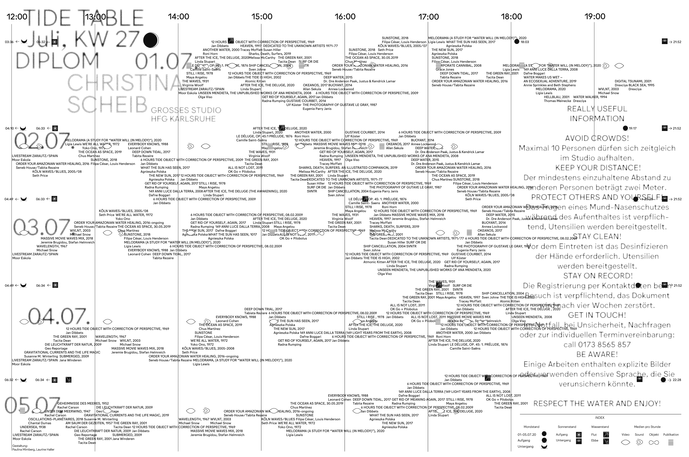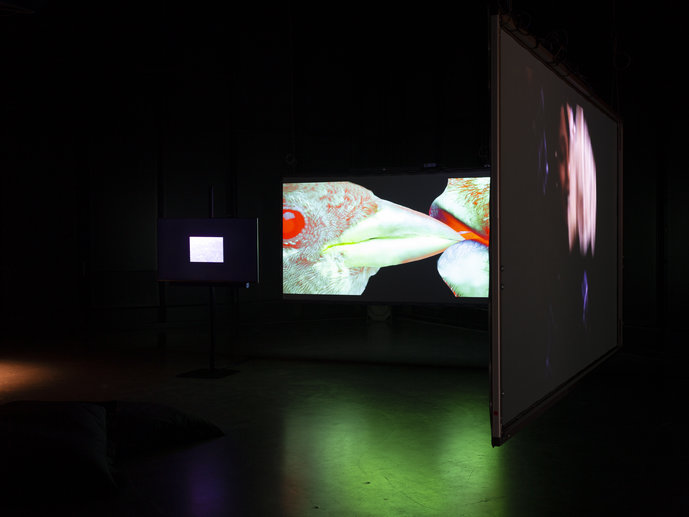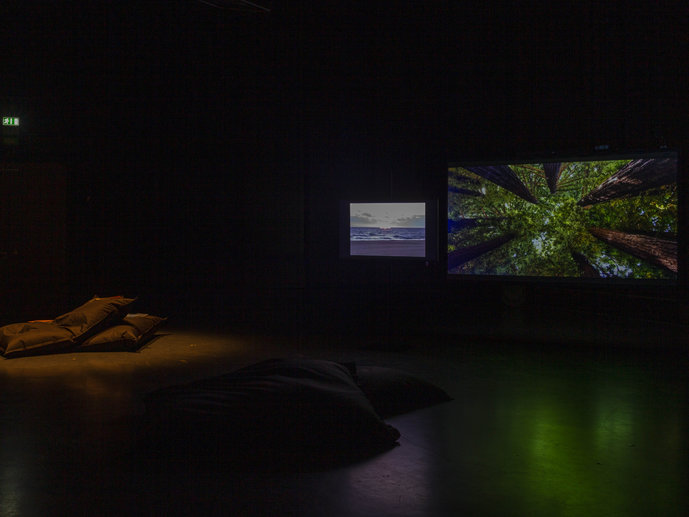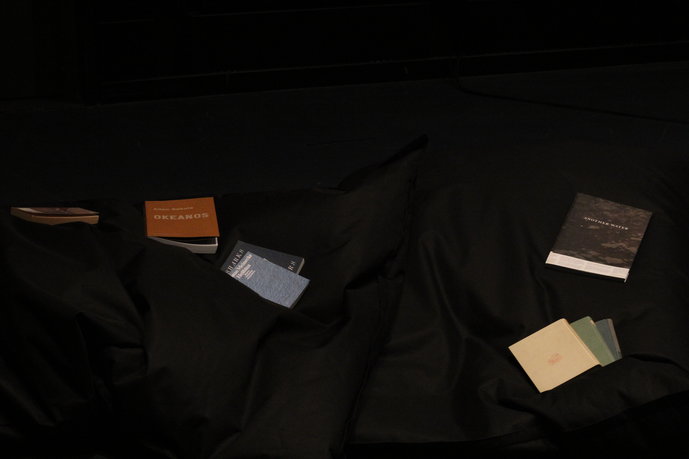

Exhibition view, Photo: Lisa Bergmann


Tide Table (© Laurine Haller & Paulina Mimberg)


Exhibition view, Photo: Christina Scheib


Exhibition view, Photo: Lisa Bergmann


Exhibition view, Photo: Lisa Bergmann


Exhibition view, Photo: Lisa Bergmann


Exhibition view, Photo: Lizzy Ellbrück
Tides are subject to the cycle of sun, earth and moon. They are the movement of the bodies of water of the ocean, which appears on the coasts as periodic rise and fall of the sea level. The covering and uncovering of the waves ecnompasses the whole of existence. The celestial body earth consists largely of water, just like our organic bodies. They are fluid, interconnected and interdependent. Tides as a metaphor of existence outline the continuous balancing of coming and going, attracting and repulsing, showing and withdrawing.
*"From dead-calm seas to angry tsunamis, the tide never returns to the same spot twice, and its movement is affected by several forces that themselves continually change: currents rising from the deep sea, the moon, the wind, and ecological situations that complicate plain dialectic view."*
(Tidalectics. Imagining an Oceanic Worldview Through Art and Science, Stefanie Hessler, 2018)
Christina Scheib’s twelve-hour exhibition understood itself as an invitation to enter a fluid environment. Like a beach or surf spot that changes constantly with the tides, the exhibition can be permanently perceived differently. Following the rhythm of the tides on the northern Spanish Atlantic coast, the exhibition programme changed over the course of five days according to the water level. While the tides keep the exhibition in a constant dynamic between revealing and concealing, surfing, as “the idea of controlled slippage” (Sharks Death Surfers, Melissa McCarthy, 2019), allowed for a playful navigation within it.
Following the metaphor of the tides, the exhibition unfolded along sound and video works as well as publications that in their origins referred to different archival platforms as well as their underlying hierarchies. Drawing lines from the climate crisis in its ecological and activist dimension (Agniezska Polska, Linda Stupart, Rachel Carson, a.o.) to the depiction of brutality and destructive forces of the colonial capitalist violence, the exhibition moves along to the monstrous representations of natural catastrophes (Grace Jones, Melissa McCarthy, Tabita Rezaire, a.o.). While the rhythm of the tide continues endlessly (Chantal Dumas, Jan Dibbets, Virginia Woolf, a.o.). The potential of dissolving the self into a we opens up and points to a recognition of water as subject and space in its own right (Chus Martínez, Radna Rumping, Susanne M. Winterling, a.o.).
Thanks to: Alexander Knoppik, Andreas Müller, Andrej Mircev, Anja Dorn, Anja Ruschival, Christoph Funk, Corinna Scheib, Francesca R. Audretsch, Hanna Franke, Hanne König, Hans D. Christ, Hendrik Stoerk, Hubert Distel, Iden Sungyoung Kim, Ivo Scheib, Jaya Demmer, Jonas Piroth, Josefine Scheu, Judith Milz, Karl-Heinz Scheib, Laurine Haller, Leia Walz, Leonie Ohlow, Lisa Bergmann, Lizzy Ellbrück, Lydia Kähny, Maria Harder-Scheib, Patrick Alan Banfield, Paulina Mimberg, Petra Zimmermann, Sascha Jungbauer, Sebastian Schäfer, Susanne Kriemann, Thomas Rustemeyer, Tobias Keilbach and Viktor Neumann.
Supervision: Prof. Anja Dorn, Prof. Andreas Müller